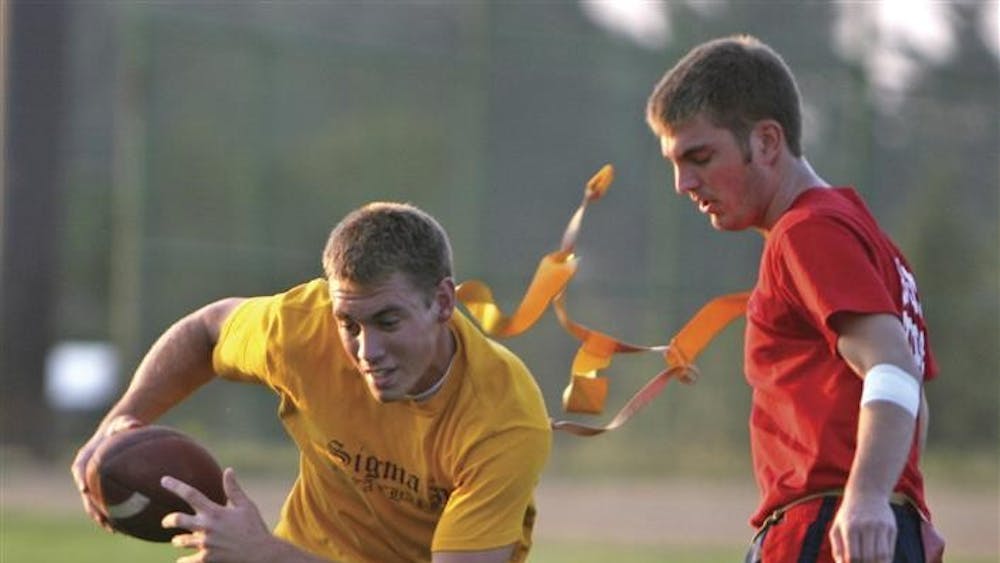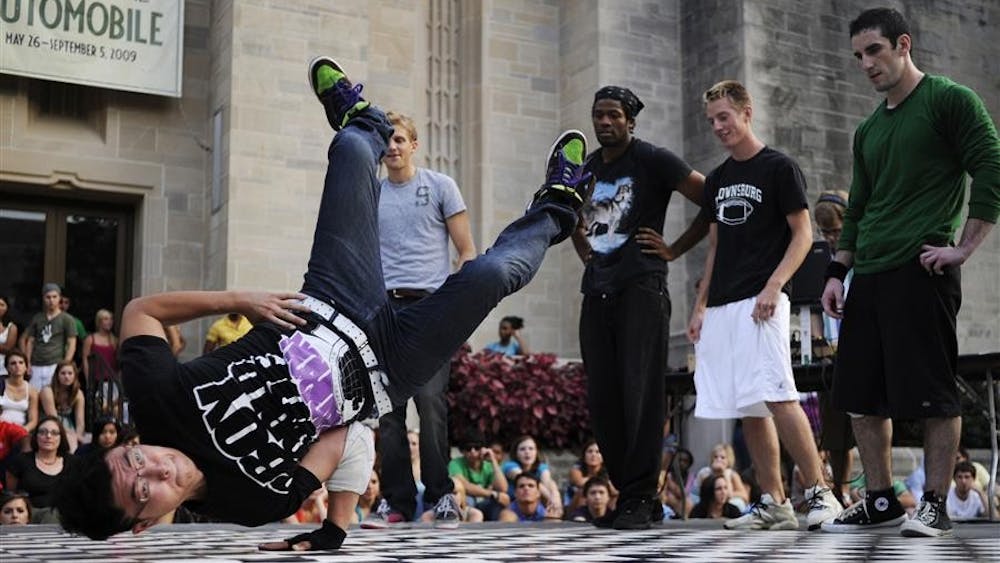This wasn’t how it was supposed to happen.
Indiana bills itself as a basketball state, and nowhere is that more apparent than in Bloomington, home of the Hoosiers.
Five NCAA titles. Eight Final Four appearances. Twenty Big Ten Conference
championships.
The Cream and Crimson had won at least seven games in every season since 1915, during the era of 13-game seasons. In 2008, one of the most turbulent moments in IU basketball history sent the Hoosiers crawling back into that cellar again. This time, they were 6-25 by the end of the season instead of 6-7.
IU coach Tom Crean and his 2011-12 squad were tasked with getting Indiana back to where it once was. Its collapse from that pedestal, however, took much longer than the three years he’d spent in Bloomington.
The end of an era
The straw that broke Bob Knight’s back fell on Sept. 8, 2000.
The then-IU basketball coach learned about allegations of assault, spearheaded by alleged victim Kent Harvey. In May 2000, Knight had been put under a “zero-tolerance” policy by the University and its president at the time, Myles Brand. Two days later, at 3:15 p.m., the University administration announced its decision to fire the winningest coach in its history, the man who earned three of the Hoosiers’ five national championships and 11 Big Ten titles.
Rioters swarmed throughout campus and marched on the Bryan House, the on-campus home of IU’s president, following the announcement. They would leave and return later, bringing with them anger and, according to reports by journalists from the time, violence. The groups burned effigies of Brand and Harvey, tore through the Showalter Fountain and battled with riot squads. Then Knight, known by fans as “The General,” returned.
He told the crowds this wasn’t the way to show their support and to disperse. Days later, he gave a speech sponsored by the Indiana Daily Student, telling his side of the story and giving them one final message.
“Don’t let the student body, the energy, the enthusiasm that the student body has had for basketball — please don’t let that change,” Knight told the gathering of fans that often drowned out his words in applause. “If you want to do something to remember me by, do that. Continue the same energy, the same enthusiasm that the students before you have given to basketball.”
The shadow of Knight
Mike Davis, an assistant under Knight, took over after Knight’s 29 years at the helm. IU administrators named Davis the interim coach for the team until they agreed upon a proper course of action.
On March 22, 2001, after a 21-13 season and postseason berth, Davis had the “interim” dropped from his title and became the Hoosiers’ head coach. He led IU to a Final Four appearance in 2002 but was criticized throughout his time at Indiana and admitted to feeling unappreciated by fans and the administration.
After just six seasons, Davis could take no more. He resigned Feb. 17, 2006, a season his team finished at 19-12.
The shadow of Knight, along with the expectations, was too much.
Kelvin Sampson coached at a well-known Oklahoma program and was considered one of the elite coaches and recruiters in the nation. His resume, in terms of accomplishments, was rock solid.
However, Sampson brought something other than his abilities, championship mentality and Final Four experience on March 29, 2006. He brought a smudge of 550 impermissible phone calls to recruits, considered an NCAA rules violation. Then-IU Athletics Director Rick Greenspan shrugged off the infractions.
In early 2008, the NCAA found Sampson and IU Athletics guilty of “major rules violations” involving the impermissible calls to recruits. On Feb. 22, 2008, he resigned.
Sampson’s resignation wasn’t the only blow to the team. IU lost in the first round of the NCAA Tournament to Arkansas after boasting a top-25 ranking all season long.
The team self-regulated and forfeited two scholarships in an effort to curb NCAA penalties. Greenspan, too, resigned after bringing in IU’s next head coach — former Marquette dynamo Tom Crean. The Hoosiers lost commitments from several highly regarded prospects and many of their own players along the way.
‘It’s Indiana’
Despite it all, Crean came.
He left Marquette, a Final Four contender and a school where he’d found much success, and came to a soon-to-be bottom-feeder. He didn’t do it for the money or championships or fame.
“It’s Indiana,” he said at his first press conference. “It’s Indiana. It’s the absolute pinnacle, and that’s to be the head basketball coach of Indiana University.”
Crean said he never doubted his decision, and now, with the pieces in place for the first time in his tenure, the future seems more “normal” for his self-proclaimed basketball school. The violations, the losses and the ridicule seem a bit dulled as the Hoosiers approach prominence again.
Still, the team must work to remove the blemish put on it by the events of the past
12 seasons.
Regardless of the challenge, Crean said he loved his job and every aspect of it, and that it was a joy to him to be a part of the tradition at Indiana. The third-year Hoosier coach grew up knowing what IU basketball was in the 1970s and ’80s, only to watch what it became two decades later.
5.6 seconds
This wasn’t how it was supposed to happen.
IU fans expected vast improvement in the 2011-12 season. They expected a tournament berth of some kind — the NIT, maybe even the NCAA tournament if the Hoosiers got lucky.
“The Movement,” a moniker coined for Crean’s stellar recruiting class set to hit Bloomington in 2012, was supposed to be the turning point. But somehow, some way, that momentous pivot came a year early.
On Dec. 10, 2011, Indiana proved it was on its way back for 39 minutes and 54.4 seconds against then-undefeated and then-No. 1 Kentucky. The Wildcats were one of the favorites to win the NCAA Title at year’s end. They were more athletic, more talented, better in nearly every conceivable way.
And yet, the Hoosiers were only down two points with 5.6 seconds to go in the game. The crowd at Assembly Hall — 17,472 fans whose voices combined to be louder than a jet engine at times — was as boisterous and excited as many had seen in decades, let alone Crean’s past three seasons.
It was not a perfect game. The Hoosiers scratched. They clawed. They battled. And in the dying seconds, IU had the ball and it had a shot.
It was a whisper from the past. The days of Knight, hanging National Championship banners, the time when saying “It’s Indiana” was more than a call back to tradition.
After 39 minutes and 54.4 seconds of build-up, the next 5.6 seconds turned that whisper into a resounding roar.
Senior guard Verdell Jones, often questioned for his decision-making by fans, made the most veteran play of his career on a brilliant drive-and-kick pass.
Junior forward Christian Watford, criticized early in the season by some for his sloppy play coming off of an injury, fired off a 3-pointer Crean could only describe as “perfect” after the game.
The ball spun through the air, cutting through a decade of defeat, humiliation and squalor. Watford held his shooting hand to the sky, leaving it hanging because he already knew.
The shot sank. Assembly Hall rose to its feet. Within a minute, Branch McCracken Court was no longer visible from above. The years of longing for Knight, aching for redemption and pleading for a miracle were over.
After more than a decade on the brink of irrelevance, Indiana basketball was back.
*SOURCE: The Arbutus, 2011-2012 issue
Decade on the Brink
How IU slipped from a men’s basketball powerhouse to one of the worst teams in the college game — and back
Get stories like this in your inbox
Subscribe





